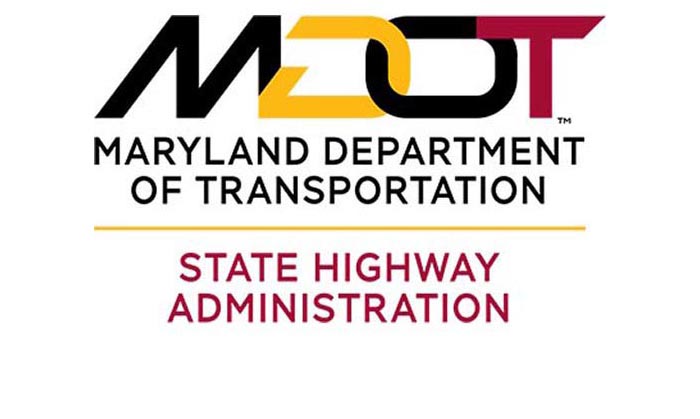
MDOT SHA Logo
MARYLAND BRIDGES DECLARED SAFE
Maintaining Bridges is Top Funding Priority; Aggressive Bridge Inspection Program Results in Early Detection of Structural Issues
HANOVER, MD – In the wake of yesterday’s highway tragedy in Minneapolis, Governor Martin O’Malley and his top transportation officials reassured Marylanders today that the bridges throughout the state are safe.
“As we continue to feel concern for the individuals and families affected by this tragic incident, it is important for Marylanders to be reassured that our state transportation infrastructure is safe,” said Governor O’Malley. “The rigorous inspection protocols and aggressive rehabilitation programs practiced in Maryland exceed the standards set by the federal government. Public safety is our top priority. We need to continue to invest in our transportation system to ensure its integrity into the future.”
There are 5,200 bridges statewide in Maryland. The State is responsible for 2,800 of those. The balance is owned by local jurisdictions with oversight provided by the Maryland State Highway Administration (SHA). Bridges in Maryland are inspected once every two years. Major crossings like the Chesapeake Bay Bridge and the Key Bridge in Baltimore are inspected once each year. The Federal Highway Administration (FHWA) conducts an annual audit of the state’s bridge inspection program. Maryland has repeatedly earned an excellent rating.
Transportation Secretary John D. Porcari stressed that his transportation team will be following the investigation in Minneapolis very closely to determine if any modifications to the construction, maintenance, operation or bridge inspection program in Maryland are warranted.
“Maryland’s highways and bridges are safe,” said Secretary Porcari. “However, we will be relentless in our efforts to improve our practices where we can and learn whatever lessons the tragedy in Minneapolis may offer.”
# # #
MARYLAND BRIDGE PROGRAM FACT SHEET
* Maryland SHA Bridge Inspectors conduct at least biennial inspections (every two years) on 2,584 bridges and overpasses constructed and maintained by SHA. Underwater inspections are conducted every four years, more frequent than the federal requirement of five years. Maryland Transportation Authority toll bridges are inspected every year.
* Maryland does everything possible to keep ALL bridges in the state SAFE. SHA’s aggressive inspection program identifies bridges very early that may need to be repaired or replaced in the future.
* Bridges are classified by Federal Highway Administration (FHWA) for functional and structural condition. FHWA identifies bridges eligible for federal funding as either functionally obsolete or structurally deficient.
* The structurally deficient rating is an early warning sign for engineers to use to prioritize funding and to initiate repairs or to begin the process to replace the bridge. The ratings apply to three parts of a bridge: the deck (riding surface), the superstructure (main portion of bridge – beams and girders) and the substructure (the support to hold up the bridge). The rating system is from zero (closed) to nine. If any portion of a bridge is rated as “four” or below, it is categorized as structurally deficient by federal standards.
- Of the 2,584 bridges along the State highway system, 411 (16%) are classified as functionally obsolete. Bridges are classified as functionally obsolete if they are deemed not wide enough to carry the amount of traffic, are prone to flooding or have height restrictions. This IS NOT related to the condition of the bridge.
- Also, of the 2,584 bridges along the State highway system, 130 (5%) are classified as structurally deficient. These bridges are also SAFE, though they have been identified to be candidates for the bridge rehabilitation and replacement program.
- Of the 130 structurally deficient bridges, 24 are under construction, being advertised for construction or permanently closed (if the road was relocated and the bridge no longer carries traffic).
- The remaining 106 structurally deficient bridges are in some stage of preliminary engineering.
- If the bridges with just a rating of the deck as structurally deficient are subtracted, there are 48 SHA bridges remaining, of which all are slated for replacement or repair.
* Bridge engineers will place weight limits on a bridge if the deterioration would cause it to not be able to safely carry a legal limit. SHA has not had to post a bridge with a weight restriction for more than a decade.
* SHA spends $95 million annually on bridge maintenance and repair.
* SHA is also responsible for inspecting more than 3,600 small structures (5 to 20 feet in length).
* All SHA inspectors are trained and certified by the Federal Highway Administration.
* Maryland’s Bridge inspection program is at the forefront of nationwide inspection programs.
* SHA has four three-person teams and three two-person teams, made up of trained technicians that look for anything that may indicate a structural problem (cracks, concrete deterioration from salt or corrosion, damage from a vehicle striking a bridge, settlement, erosion, blockage that prevents water flow, misalignment of beams etc…). Consultant inspection teams augment SHA teams when necessary. SHA also samples concrete and materials for structural integrity.
* If a problem is found, structural engineers are dispatched to determine the severity. This could result in a bridge being posted with a weight limit to advise drivers of the maximum weight allowed.
* A bridge is classified as any structure greater than 20 feet.
* FHWA audits the bridge inspection program every year. SHA’s program continually receives an ‘excellent’ rating.
* All other jurisdictions in MD (counties, municipalities, federal government) are responsible for maintaining and inspecting bridges on the non-state system. All of the non-State maintained bridges are also inspected at least once every two years.
- Maryland Transportation Authority (MdTA) maintains and inspects ALL toll bridges and all bridges along I-95 between the Baltimore city/Baltimore County line and the Delaware line.
# # #